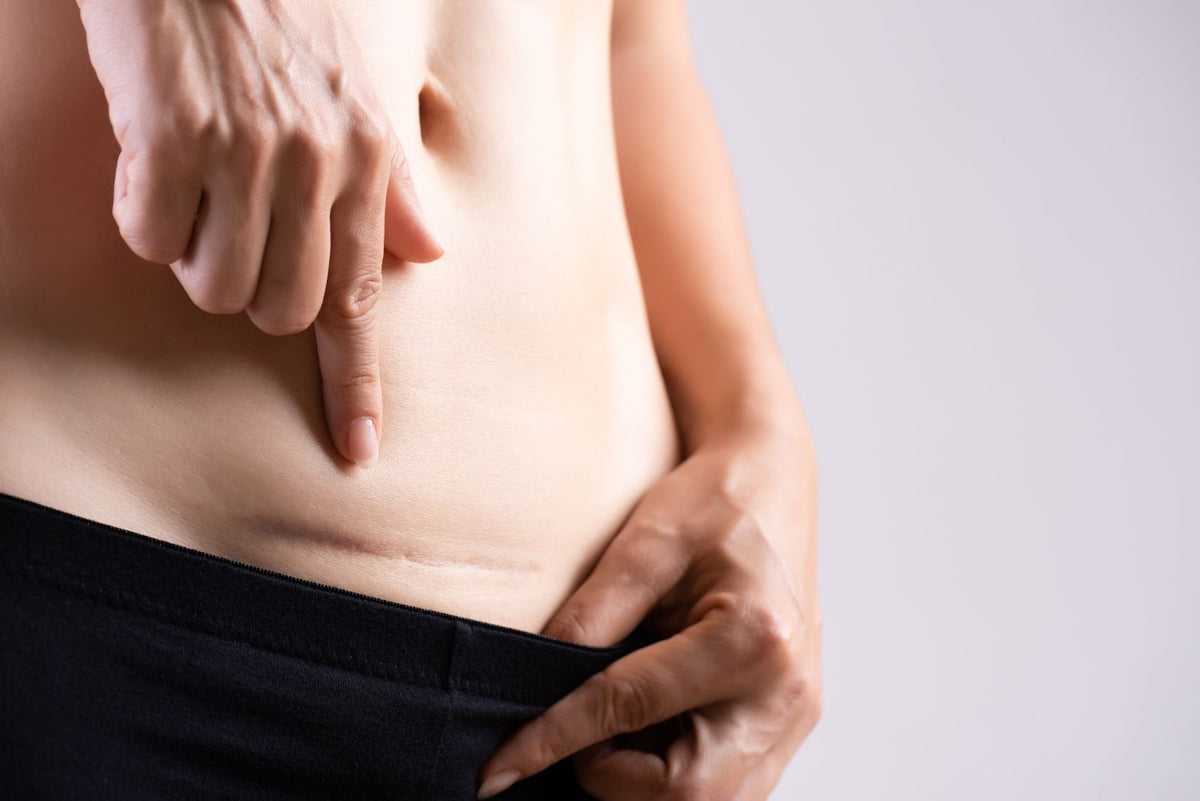Free Shipping over $40.

Birth is a miracle of life and one of the toughest things a woman does. She not only risk her own life when she goes into labour but does everything possible to bring her baby safely to this world.
A woman receives many souvenirs, which she wears like a medal when she comes out of the delivery room. Saggy skin, pouching tummy, and a C-section scar are some of them.
One-third of the pregnant women deliver through the C-section. Sometimes it is because the baby is in an awkward position, the contractions are not progressing, or the mother's health condition does not allow her to have a natural birth.
Cesarean section, more commonly known as C-section, is considered quite safe and has now been widely accepted. In contrast to natural delivery or vaginal birth, it is a surgical procedure that ultimately leaves back scars and marks.
Below, we will cover the 2 types of C-section cuts a doctor might perform, the kinds of scars that may form, and also 7 basic care steps to get your C-section on its way to being healed.
During a C-section, the surgeon makes two incisions of 4-6 inches, one on the abdomen and the other on the uterus.
There are two types of incision the doctor may choose from;
At times the body's natural healing mechanism is disturbed, which does not allow the C-section incision to heal properly and form an abnormal scar. The two most commonly seen scars are;
Just like any other wound, a C-section incision also requires proper care;
The C-section incision is made onto the abdomen below the bikini line, which is then extended into the uterus so that the baby can be delivered. The incision is mostly small and fades with time, but it requires proper care to avoid complications just like other wounds.